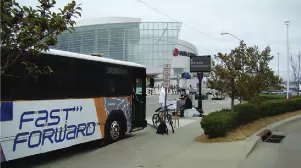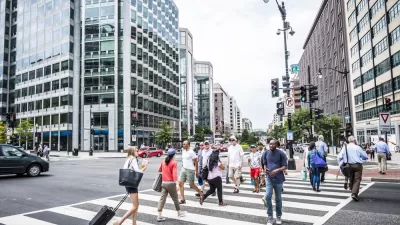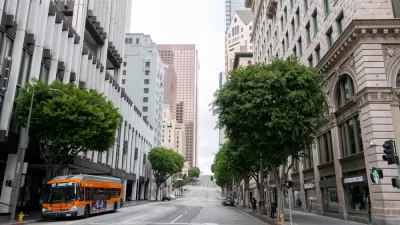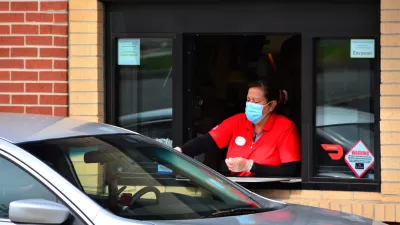Progress in combating climate change won't be possible unless Americans drive less. And Americans won't be able to drive less without changes to land use patterns in the United States.

"The Senate Democrats’ Special Committee on the Climate Crisis recently released a report recommending key federal actions in each sector to avert the impacts of climate change," according to an article by Rayla Bellis. First among the actions recommended in the report: the transportation sector should do more to enable more Americans to choose walking, biking, and walking over car trips.
Writing for Transportation for America, Baylis acknowledges that the report incorporates a number of the organization's recommendations for preventing the impacts of climate change, but the new report is noteworthy separate from that success in a few ways, including its attention to land use as a determinant of car trips in addition to its recommendation to enable non-automobile mobility.
In late August, the Senate Democrats’ Special Committee on the Climate Crisis released a climate action report that proposes the kind of paradigm shift that’s needed. The report doesn’t merely go beyond electric vehicles—it leads its transportation section with recommendations on the importance of reducing how much people need to drive by building walkable, transit-served communities where people can live and work in the same area.
The report lays blame for the current car-centric nature of most U.S. cities at the feet of 20th century zoning practices, according to Ballis. The report suggests that despite the inherently local powers of land use control in the United States, federal policy reform could go a long way toward the kinds of outcomes described above.
The Senate report recommends that the federal government provide significant new funding and financing to promote smart growth, safer streets, and public transportation options. Done right, those strategies can be a potent tool to reduce emissions, while addressing critical issues of equity and housing affordability in the process.
Also of note, the report says many of the same land use reforms will be important to implement in rural areas, not just urban areas.
Ballis concludes by noting that the report is an important first step, but far from the legislative action that will be required to achieve true progress on any of these recommendations. "Reports like this are only meaningful if they actually impact federal transportation policy," writes Ballis.
FULL STORY: Senate Democrats recommend less driving—as Senate committee approves billions for new roads

Planetizen Federal Action Tracker
A weekly monitor of how Trump’s orders and actions are impacting planners and planning in America.

Restaurant Patios Were a Pandemic Win — Why Were They so Hard to Keep?
Social distancing requirements and changes in travel patterns prompted cities to pilot new uses for street and sidewalk space. Then it got complicated.

Map: Where Senate Republicans Want to Sell Your Public Lands
For public land advocates, the Senate Republicans’ proposal to sell millions of acres of public land in the West is “the biggest fight of their careers.”

Maui's Vacation Rental Debate Turns Ugly
Verbal attacks, misinformation campaigns and fistfights plague a high-stakes debate to convert thousands of vacation rentals into long-term housing.

San Francisco Suspends Traffic Calming Amidst Record Deaths
Citing “a challenging fiscal landscape,” the city will cease the program on the heels of 42 traffic deaths, including 24 pedestrians.

California Homeless Arrests, Citations Spike After Ruling
An investigation reveals that anti-homeless actions increased up to 500% after Grants Pass v. Johnson — even in cities claiming no policy change.
Urban Design for Planners 1: Software Tools
This six-course series explores essential urban design concepts using open source software and equips planners with the tools they need to participate fully in the urban design process.
Planning for Universal Design
Learn the tools for implementing Universal Design in planning regulations.
Heyer Gruel & Associates PA
JM Goldson LLC
Custer County Colorado
City of Camden Redevelopment Agency
City of Astoria
Transportation Research & Education Center (TREC) at Portland State University
Camden Redevelopment Agency
City of Claremont
Municipality of Princeton (NJ)





























